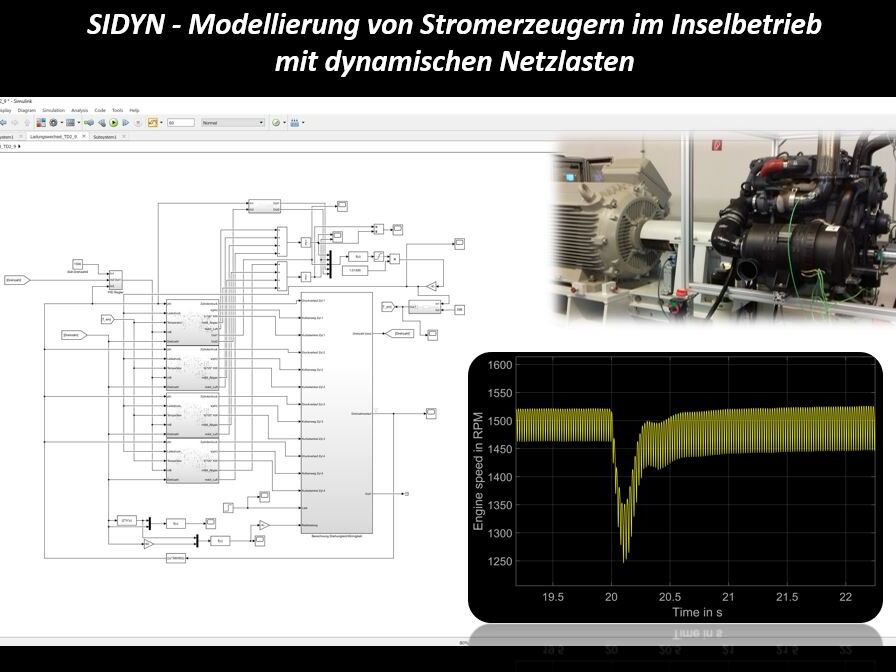In order to achieve the climate targets set and in the context of energy policy efforts, efficient and low-emission energy systems are of decisive importance. With regard to large combustion engines, this applies in particular to their use as electricity and heat generators in centralized and decentralized stationary systems (combined heat and power plants, 1 kW to 20 MW) and in propulsion systems (e.g. Ship propulsion, up to 95 MW). At up to 90%, the achievable efficiency of a combined heat and power plant is significantly higher than that of a conventional power plant (45%). For special applications with strongly fluctuating electrical load requirements, such as in steel and cement plants (induction furnaces) or modern ship propulsion systems (manoeuvring), the dynamic properties of the power generators must be designed to fit the individual requirements.
In the project, an easy-to-use, application-oriented calculation tool is to be developed that reflects the behavior of an internal combustion engine when used as a power generator in an island grid with a dynamic grid load. Based on a module database to be developed as well as special programme functions, it should be possible to comparatively evaluate different system configurations and operating scenarios and to identify an optimal configuration or operating mode. The tool is to be used at the interface between engine manufacturers and energy system users and contribute to cost and time savings in the offer and development process.


